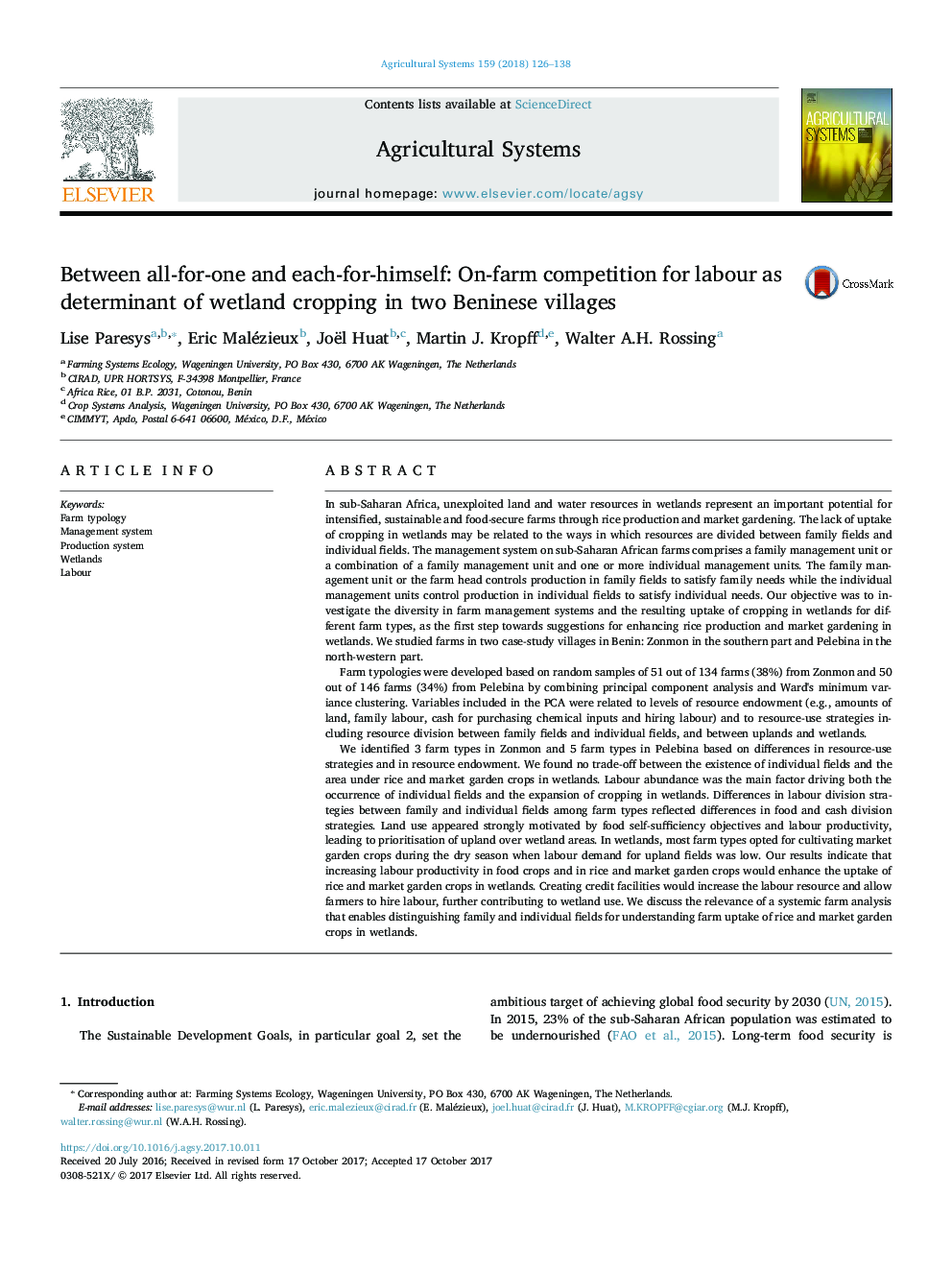| Article ID | Journal | Published Year | Pages | File Type |
|---|---|---|---|---|
| 8875121 | Agricultural Systems | 2018 | 13 Pages |
Abstract
We identified 3 farm types in Zonmon and 5 farm types in Pelebina based on differences in resource-use strategies and in resource endowment. We found no trade-off between the existence of individual fields and the area under rice and market garden crops in wetlands. Labour abundance was the main factor driving both the occurrence of individual fields and the expansion of cropping in wetlands. Differences in labour division strategies between family and individual fields among farm types reflected differences in food and cash division strategies. Land use appeared strongly motivated by food self-sufficiency objectives and labour productivity, leading to prioritisation of upland over wetland areas. In wetlands, most farm types opted for cultivating market garden crops during the dry season when labour demand for upland fields was low. Our results indicate that increasing labour productivity in food crops and in rice and market garden crops would enhance the uptake of rice and market garden crops in wetlands. Creating credit facilities would increase the labour resource and allow farmers to hire labour, further contributing to wetland use. We discuss the relevance of a systemic farm analysis that enables distinguishing family and individual fields for understanding farm uptake of rice and market garden crops in wetlands.
Related Topics
Life Sciences
Agricultural and Biological Sciences
Agricultural and Biological Sciences (General)
Authors
Lise Paresys, Eric Malézieux, Joël Huat, Martin J. Kropff, Walter A.H. Rossing,
